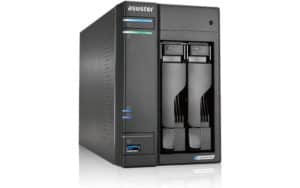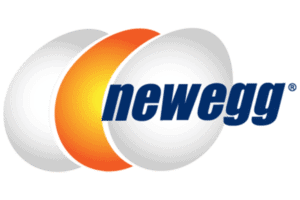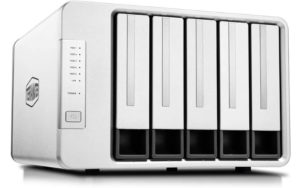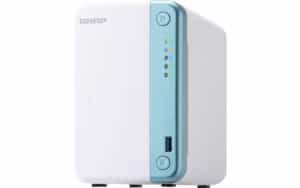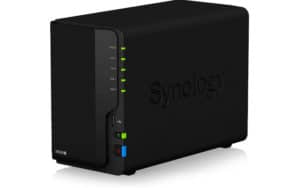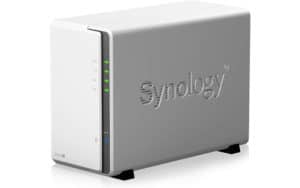Best NAS in 2023
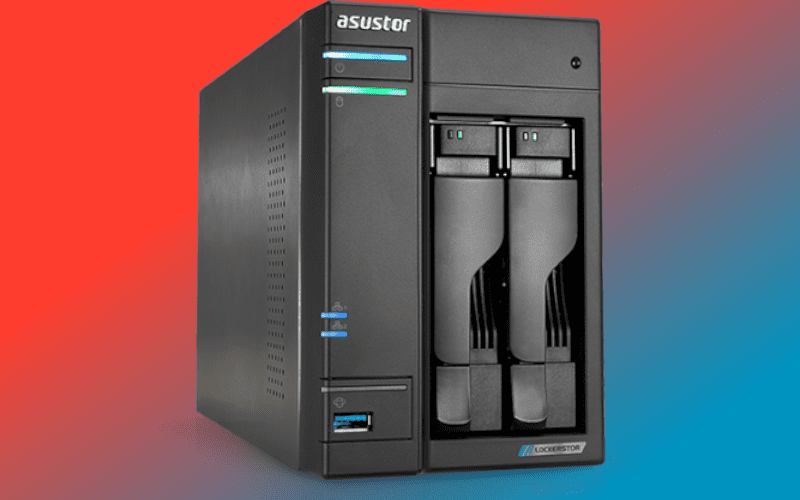
Table of Contents
The evolution of the NAS hardware and indeed the best NAS devices has been an interesting one, as these devices grew out of the challenge that IT professionals faced installing and maintaining server technology. Mainframe and mini system solutions from IBM, and others, provided turnkey solutions for those willing to invest. But smaller than Enterprise-scale businesses struggled to provide centralized computing services for smaller user bases and dramatically reduced budget sizes.
The use of server operating systems and PC-derived technology provided part of the answer, as these still needed a high degree of expertise to operate. Businesses desperately wanted solutions that were easier to deploy and maintain without highly trained IT professionals. It didn’t take long for these server-in-a-box solutions to become popular, as they delivered scalable network storage that could be rapidly deployed to meet the needs of dynamic businesses. Today, NAS is considered a critical component in any small business infrastructure, as it provides a wide range of services inside and outside the company that can be adapted or refocused should requirements change.
With that in mind, we’ll be looking at the best NAS available in 2022; looking at exactly what makes one NAS better than another, and focusing on a small selection of products that deliver the best experience.
Products at a Glance
How we picked the Best NAS in 2022
Choosing a NAS isn’t about checking the metrics and declaring a winner based purely on those. Because, invariably, the most expensive devices typically have the best components, making them faster and more able.
Therefore, the ones we’ve included here cover a range of budgets while (among their peers) offering the best value in their strata of the NAS market.
But, alongside price and performance, the other important factor in a good NAS is flexibility. Often NAS are bought by individuals and businesses for a specific purpose. But over the working life of that hardware, those requirements and objectives often change.
The best NAS solutions have pathways to possible upgrades and a selection of installable applications that enable them to be easily repurposed. In this respect, the best NAS products aren’t a one-trick pony but a highly malleable solution that can become more than a file server or media streamer merely by swapping out the drives, adding memory, or installing extra applications.
Picking the right NAS for you is often about imaging how its role might change in the future and not buying an inflexible design that can’t adapt to a shift in emphasis. Sue to the importance of this dimension, we’ve rated flexibility as a significant component in our NAS choices.
Product Reviews
- Intel Celeron quad core CPU
- 4GB of DDR4 RAM
- Dual 2.5GbE LAN ports
- HDMI Out
- Costly
Asustor makes some cheaper NAS than the AS6602T built around ARM processors. But this NAS uses the Intel Celeron J4125 quad-core CPU running at 2GHz (burst up 2.70 GHz). By NAS standards, this is a powerful platform when combined with the 4GB of DDR4 pre-installed memory – and that can be user-upgraded to 8GB.
This CPU and GPU, combined with the single HDMI 2.0a out port, delivers a system perfect for Plex or any other media presentation software you choose to use. With the HDMI ports’ ability to output 4K resolution at 60Hz, the size of files you might store on the drive could be significant. Thankfully, Asustor blessed the AS6602T with two 2.5GbE LAN ports that can be link aggregated to boost total network bandwidth. The unit also has two M.2 Drive slots to install NVMe SSDs, which are useful for caching the conventional drives mounted in the two bays.
In short, the AS6602T is a powerful and agile NAS that can be tweaked for a wide range of situations and use profiles. And, it has sufficient hardware by default that those wishing to achieve the maximum possible performance need to enhance it with extra memory and M.2 storage.
- BTRFS file system
- 4K transcoding
- Cheapest Intel NAS
- Limited selection of apps
The F2-221 replaced the F2-210, although TerraMaster still sells that 2017 design for those that like its uniform silver styling.
This is a more expensive model, but compared to Synology or Asustor NAS, with a similar specification, it looks on the cheap side.
Costing around $260 for the diskless model, this NAS uses the Intel Apollo J3355 2.0GHz dual-core CPU. It also comes with 2GB of DDR4 RAM, is upgradable to 4GB, and is capable of 4K video transcoding.
Network bandwidth is enhanced with aggregated dual gigabit LAN ports, and a single HDMI port allows this NAS to display video without the need for streaming.
A small but essential feature we like about TerraMaster machines is that they support the BTRFS file system – as an alternative to ETX4, a technology that Synology also embraces.
The weakness of all TerraMaster NAS is that the TOS OS isn’t as refined as those from Synology, QNAP, or Asustor, and its application selection is also less encompassing. Therefore, before investing in the F2-221 or any TerraMaster NAS, make sure that the applications you need are supported beforehand.
If you have a specific job that the NAS will do, the F2-221 has enough power to deliver that easily. It’s more an issue of the support you can expect if you run into issues or wish to repurpose the NAS.
- HDMI out
- 2GB RAM Expandable to 8GB
- PCIe Gen 2 x4 slo
- Only single gigabit LAN
Going for the very cheapest NAS might be kind to your budget, but spending a little more can dramatically enhance the potential of the device. Proof of this logic is in the QNAP TS-251D-2G, a dual-bay NAS with more potential than most.
A compact design that first appeared in 2020, the QNAP TS-251D comes in both a 2GB RAM model and a 4GB option. But the memory can be user upgraded by a SO-DIMM swap up to 8GB with two 4GB DDR4 modules.
There are at least three features on this NAS that make it worth the cost. The first of those is the dual-core Celeron J4025 processor that has an integrated Intel HD Graphics 600 GPU. That silicon ties neatly into the second; an HDMI out port enabling this NAS to render media directly to a TV or monitor without streaming.
And, if that wasn’t wonderful enough, the third is a single PCIe 2.0 slot with four lanes; equivalent to two lanes on PCIe 3.0.
Having that slot can cleverly negate other limitations of this machine, enabling the adding of network and storage enhancing cards.
Using an inexpensive 2.5GbE LAN card in the slot can boost the bandwidth of the QNAP TS-251D dramatically, or an M.2 slot for an SSD can also be put in there.
The QNAP TS-251D is all about possibilities, and that’s why it made our list.
- Celeron power
- DSM 7.0 OS
- 2GB RAM (upgradable to 6GB)
- No 2.5GbE LAN ports
- Soon to be replaced
The DS220+ will likely be replaced with the DS222+ or another NAS later this year, but only Synology knows those exact plans and timings.
Meanwhile, the DS220+ is the flagship dual-bay NAS for home users and a handy piece of hardware for small businesses that need a small NAS to share files, record security footage, backup other NAS, or stream media.
The Intel Celeron J4025 processor has an integrated GPU that can transcode video files smoothly, providing an excellent platform for those using Plex. There is plenty of extra performance capacity to handle more than a single critical task without noticeably impacting its other functions.
As with the DS220j, the most significant selling point of any Synology NAS is the finely crafted DSM 7.0 operating system and the significant array of applications it supports. When running on the DS220+ hardware, the OS and apps make for a potent combination.
Our only concern about this design is that Synology refused to give it a 2.5GbE LAN port or a PCIe slot. Limiting how much data can flow in and out, making the performance less than it potentially could be.
The DS220+ is precisely the type of NAS that will invariably have a use until the day it stops working.
- Synology DSM 7.0
- Great App selection
- Only 512MB RAM
- Soon to be replaced
The Synology brand is synonymous with NAS, and its j-series boxes are the affordable face of a range that includes some costly devices in its pantheon.
Looking like its siblings and predecessor, the DS220j provides a simple two-bay solution. It comes as diskless or with pre-installed storage up to a maximum of 32TB (16TB x 2) of Synology-approved drives. Possibly even more space than this using unapproved drives.
Additional storage can be attached to one of the two USB 3.0 ports on the rear, expanding its potential further.
If this design has a weakness, it’s the amount of memory that Synology gave it. With only 512MB of DDR4 memory, the DS220j isn’t a machine that you would want to install lots of applications. Though, it’s sufficient for a few jobs beyond the file serving function.
One downside to this model is that RAM can’t be upgraded beyond the default amount, unfortunately.
The best aspect of this, and any NAS in the Synology stable, is the DSM 7.0 OS that it runs. Running the most polished NAS OS available and sporting the best application catalog, these elevate the DS220j to a handy piece of equipment.
Things to consider
Pick what you need
The trick with picking the best NAS is to focus on the immediate requirements, while also considering how the NAS might be reconfigured should circumstances change.
A helpful process is to identify a NAS that best fits your specific needs and then consider the products directly above and below that model. Are cheaper designs likely to perform as well for the intended use, or do the slightly higher specification models have features that could be useful in the future?
Its also worth noting that all NAS are a sum of their parts, both hardware, and software. Having a powerful processor and lots of memory isn’t that helpful if the application you are most interested in isn’t available on that platform. Those
Intending to run Plex on your Nas, as an example, might have specific views on the suitability of the NAS. Finding out what owners of that NAS think about particular software on the machine and seeing what issues have been discussed in the brand’s technical forum could be invaluable knowledge.
The right support?
Reviewers only spend a small amount of time with each machine, and they might not encounter an issue with a particular application. Those that use them all the time will inevitably find whatever issues exist and may even come up with workarounds.
How rapidly known bugs are addressed by the hardware maker is also important, especially in respect of the closing of potential security holes and those issues that have the potential for data loss.
The key to making the right choice is to research an intended purchase so that you don’t end up with something that doesn’t perform the intended role and deliver on its investment.
Our Verdict
There was a real temptation to hand this crown to Synology, but there are better devices around that aren’t undermined by that company’s specification problems having so many products and not wanting to step on its own commercial toes.
Both the DS220j and DS220+ are going to be superseded soon, we assume, and therefore the best pick here is the excellent Asustor Lockerstor 2 AS6602T. Compared to the DS220+, it’s got far superior network bandwidth, takes M.2 SSDs, and has an HDMI out port.
These features make the AS6602T a highly flexible NAS that can perform multiple duties without running out of resources or available bandwidth. For those that want extra storage, Asustor makes external drive enclosures that can be attached by USB 3.0, or the AS6604T is practically the same NAS but with four internal bays.
While neither of these machines can be classed as cheap, they do represent good value for money considering the powerful hardware onboard and the software that’s available for them.


